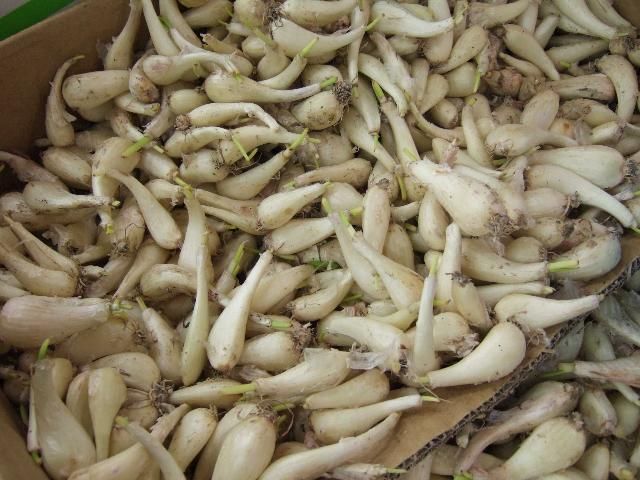Rakkyo—Allium chinense G. Don.1
Rakkyo belongs to the onion family, and it closely resembles chives. The bright green, hollow leaves enlarge at the base to form small bulbs. Chives, of course, do not enlarge in this manner. One interesting feature of rakkyo is that its seed stalk (scape) is solid, a characteristic usually reserved for those members of Allium having flat rather than round, hollow leaves.
Rakkyo goes by such other names as Japanese scallion and ch'iao t'ou. While important as a vegetable in Asia, it is seldom grown in Florida or in the United States. Do not confuse it with wild leeks (or ramps), which have flat, bladed leaves and grow well around the state.

Credit: KENPEI, CC BY-SA 3.0

Credit: Midori, CC BY-SA 3.0
Culture
Rakkyo is started by bulb division. In Florida, set the bulbs in the fall and harvest the new bulbs that form in the following late summer. Rakkyo is reported to need a dormant period in the summer rather than winter for bulb initiation, but this response to Florida's climatic conditions has not been verified.
Use
Some rakkyo bulbs are pickled, some are canned, and others are used as a boiled vegetable.


